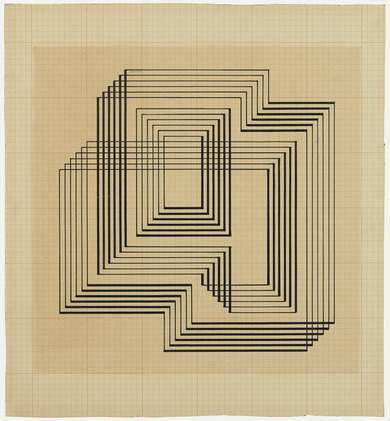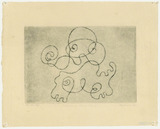Josef Albers: Concentric Squares (1941)
Josef Albers: Concentric Squares (1941)
Ein Element plus ein Element muß außer ihrer Summe mindestens eine interessante Beziehung ergeben. Je mehr verschiedene Beziehungen entstehen und je intensiver sie sind, je mehr Elemente sich steigern, desto wertvoller ist das Ergebnis…
[One element plus another element, in addition to its sum, must yield an interesting relationship. The more different relationships that result and the more intensive they are, the more elements enrich themselves, the more valuable the result… (ed. trans.)]
Josef Albers, 1968
Albers described the aim of his teaching in 1970 as follows: “To open eyes. […] Not to just let things wash over you passively, but to see for yourself, to search, find, discover and experience. Yes: You can learn to see creatively!” (ed. trans.)
At first glance, Albers' pictures look simply and clearly constructed, however, the geometrical lines confuse the vision. As soon as one structure has been recognised, another figure appears in an opposing manner. Concentric Squares and Ascension are part of the series Graphic Tectonics that was created in 1941/1942. The series of non-colour, completely linear pictures – drawings and zinc lithographs – covers the theme of two interacting centres that approach, repel, move, turn, penetrate and repeat each other.
Even though they initially appear to be two-dimensional, on closer observation as depictions of three-dimensional objects, the line constructions in Concentric Squares are perceived more as spaces that displace each other or push themselves over each other. The effect is of an apparent fading or penetration, rising and falling, the impression of intersecting spaces: the square shapes that border these spaces can be interpreted as windows, doors and walls. The square as the most symmetric of all shapes becomes the exit to asymmetry and motion in Albers' pictures. Albers refused to bow to the restriction to four sides and four corners of a square. Horizontal and vertical, parallel lines are connected by right angles. Albers varied the motifs and turned one of the versions into a zinc lithograph with the title Shrine.


